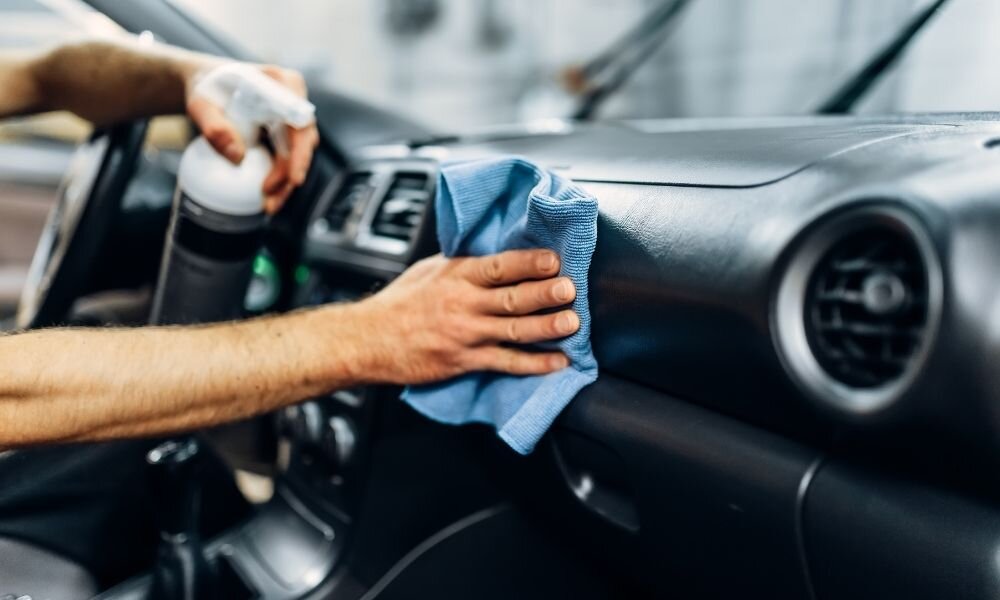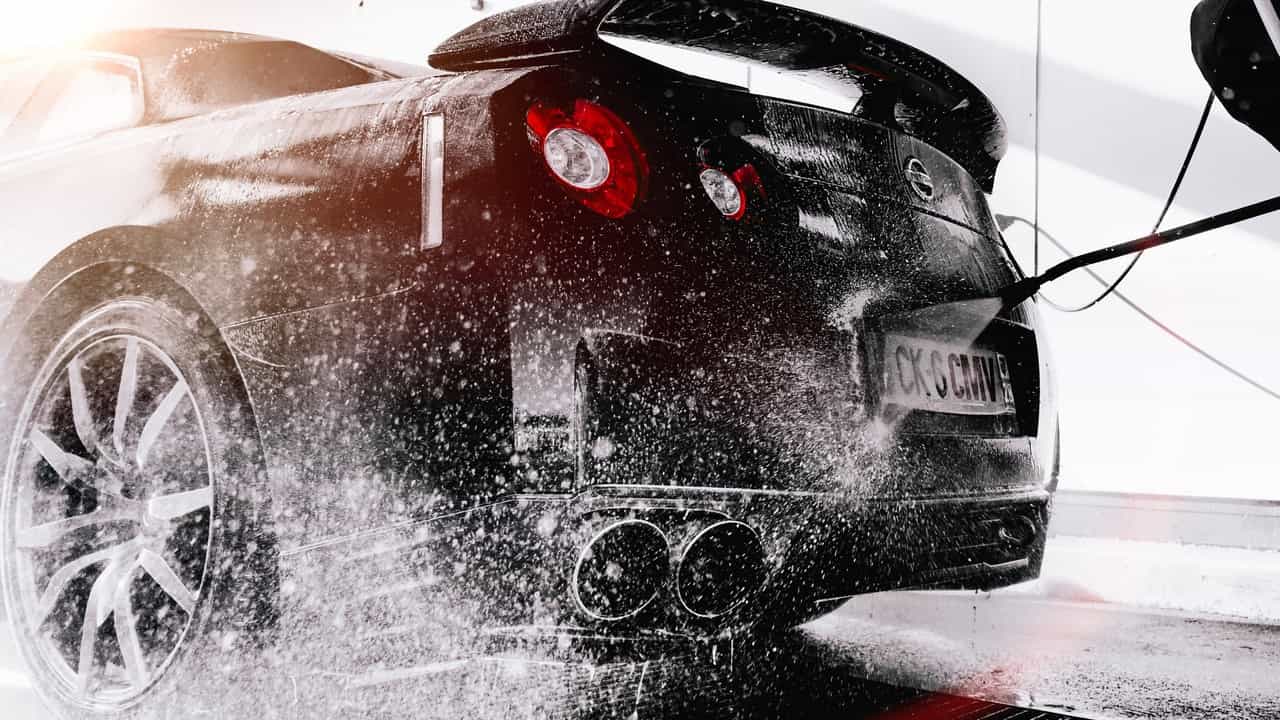Just How Ceramic Coating Adds Toughness and Gloss to Your Car's Surface
Ceramic finishing has arised as a pivotal option for vehicle enthusiasts and everyday motorists alike, providing a sophisticated layer of defense that enhances both the longevity and gloss of vehicle surface areas. By forming a strong chemical bond with the factory paint, this cutting-edge covering uses substantial resistance to environmental factors such as UV rays and pollutants.

What Is Ceramic Finishing?
Ceramic coating is a high-performance protective layer used to a car's outside surface areas, designed to enhance sturdiness and keep aesthetic appeal. This advanced technology makes up a fluid polymer that chemically bonds with the automobile's manufacturing facility paint, producing a durable shield against environmental contaminants and wear. Unlike traditional wax or sealers, which provide temporary protection, ceramic coatings offer durable advantages that can sustain for a number of years with appropriate maintenance.
The key objective of ceramic layer is to shield the auto's paint from dangerous aspects such as UV rays, dirt, bird droppings, tree sap, and road crud. By developing a hydrophobic surface, it facilitates less complicated cleaning, allowing water and impurities to move off with minimal initiative. Furthermore, ceramic layers boost the gloss and deepness of the paint, giving the car a showroom-like surface.
Moreover, the application of ceramic finish can enhance a vehicle's resale value by maintaining its exterior problem in time. With its superior visual enhancements and safety qualities, ceramic layer has come to be a preferred selection for auto lovers and day-to-day chauffeurs looking for to maintain their lorry's appearance and honesty.
How Ceramic Finishing Functions
When used to a car's outside, ceramic coating develops a strong chemical bond with the paint, creating a safety layer that is both hydrophobic and resilient. AODetail Ceramic Coating. This bonding procedure takes place at the molecular degree, where the ceramic particles interlace with the automobile's clear layer, causing a incorporated and seamless surface
The primary element of ceramic layers is silicon dioxide (SiO2), which is obtained from natural products such as sand. When the layer is applied, it undertakes a healing procedure that boosts its solidity and resilience. This improvement causes a surface area that can hold up against numerous ecological tensions, consisting of UV rays, oxidation, and chemical spots.
Furthermore, the hydrophobic buildings of ceramic coating enable water to bead and roll off the surface, carrying dust and particles with it. This decreases the requirement for frequent washing and can considerably lower the buildup of pollutants.

Advantages of Ceramic Finishing
The application of ceramic covering uses various benefits that enhance both the appearance and long life of a vehicle's exterior. Among the primary benefits is its exceptional protective qualities. Ceramic finishes develop a hydrophobic surface, which pushes back water and prevents pollutants such as dust, crud, and roadway salt from sticking to the paint. This not just maintains the vehicle cleaner for longer periods yet also decreases the frequency and intensity of washing needed.
In addition, ceramic layers are recognized for their UV resistance, shielding the paint from sunlight damage and oxidation, which can lead to fading and a boring appearance over time. This resilience adds to keeping the automobile's visual allure and resale value.
Another substantial benefit is the boosted gloss and deepness that ceramic finishings offer. The reflective homes of the covering offer the paint a fantastic shine, making the auto appearance freshly brightened.
Application Process Introduction
Using a ceramic layer typically Learn More involves several crucial steps that make certain ideal bond and performance. The initial step is detailed surface preparation, that includes cleaning the vehicle to eliminate dirt and pollutants, adhered to by sanitizing the paint utilizing clay bars or chemical solutions. This process removes ingrained bits that can hinder the layer's bond.
When the surface area is tidy, it is vital to inspect and fix any kind of paint imperfections, such as swirls or scratches, via polishing. This not only improves the look but also supplies a smooth surface area for the coating to abide by successfully.
After brightening, the surface area ought to be wiped down with an isopropyl alcohol option to get rid of any continuing to be residues or oils. This action is critical for achieving a strong bond in between the ceramic finishing and the paint.
The next step includes using the ceramic finish itself, normally site using a foam applicator or microfiber cloth. It is very important to operate in small sections, permitting the item to heal for the advised time prior to rubbing off any kind of unwanted. Finally, a treating duration is essential for the coating to fully bond, maximizing its safety residential or commercial properties and gloss.
Maintenance Tips for Long Life
Preserving a ceramic layer is crucial for ensuring its durability and effectiveness in securing your vehicle's paint. Routine upkeep not only boosts the covering's performance but likewise preserves the visual appeal of your automobile.
First, clean your car often using a pH-neutral auto shampoo. Prevent unpleasant products that can harm the finishing; rather, make use of microfiber wash gloves and towels. Wash thoroughly to eliminate all soap deposits, which can bring about a plain surface over time.
2nd, use a maintenance spray created especially for ceramic coverings after each laundry. This will boost hydrophobic residential properties and add an extra layer of protection against contaminants.
Furthermore, avoid automated auto cleans that usage extreme chemicals and brushes, as they can compromise the finishing's stability. AODetail Ceramic Coating. Instead, select hand washes whenever feasible
Lastly, think about routine inspections and professional upkeep every 6 months. Specialists can analyze the layer's problem, reapply if needed, and offer additional treatments to expand its life.
Verdict
To conclude, ceramic finish offers as a reliable remedy for boosting both the longevity and gloss of an automobile's surface. By forming a solid chemical bond with the factory paint, this safety layer supplies resistance to ecological variables such as UV rays and impurities. The hydrophobic residential properties facilitate less complicated upkeep and add to a sleek look. Eventually, the application of ceramic finish results in a resilient aesthetic allure, making certain that vehicles preserve their showroom-like finish gradually.
Ceramic finishing is a high-performance safety layer used to a lorry's outside surface areas, developed to improve toughness and keep visual charm. Additionally, ceramic layers enhance the gloss and depth of the paint, giving the car a showroom-like surface.
The application of ceramic finishing provides various advantages that enhance both the look and longevity of a car's outside.In final thought, ceramic covering offers as an efficient solution for improving both the resilience and gloss of a car's surface. Ultimately, the application of ceramic finishing results read this article in a lasting aesthetic appeal, ensuring that vehicles keep their showroom-like finish over time.